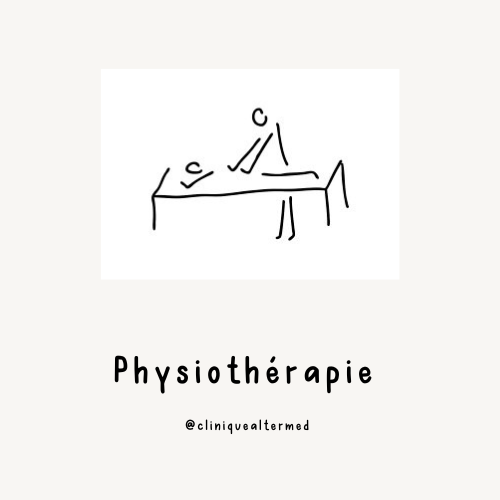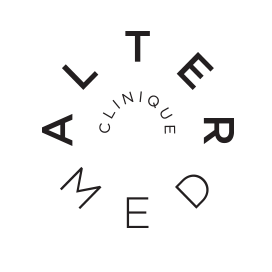Clinique altermed
Montreal physiotherapy
Manual therapy is an essential component of physiotherapy in private clinics, emphasizing manual techniques to diagnose, treat, and prevent a wide range of musculoskeletal symptoms and dysfunctions.
In this article, we will delve into the importance of manual therapy in private physiotherapy and how it can address various issues.
Foundations of Manual Therapy
Manual therapy is based on a deep understanding of human anatomy, physiology, and biomechanics. Physiotherapists specialized in manual therapy are trained to perform precise assessments of joints, muscles, and soft tissues. They use these assessments to identify restrictions in movement, muscle imbalances, and pain issues associated with various symptoms and dysfunctions.
Joint Manipulations for a Range of Symptoms
Manual therapy is particularly effective in treating symptoms and dysfunctions such as:
-
Lower Back Pain: Joint manipulations can alleviate pain and improve mobility in patients suffering from chronic or acute lower back pain.
-
Temporomandibular Dysfunction (TMD): Manipulations can be used to address issues with the temporomandibular joint, reducing pain and enhancing jaw function.
-
Neck Pain: Cervical manipulations can help relieve pain and restore mobility in the neck.
-
Frozen Shoulder (Adhesive Capsulitis): Manual therapy can increase shoulder mobility and reduce pain in patients with adhesive capsulitis.
-
Tendonitis: Joint manipulations and gentle mobilizations can contribute to pain reduction and improved function in various tendonitis conditions.
Gentle Mobilizations for Various Issues
In addition to joint manipulations, physiotherapists in private clinics employ techniques of gentle mobilization to address symptoms and dysfunctions, including:
-
Herniated Disc: Gentle mobilizations can help reduce pressure on vertebral discs, alleviating associated pain.
-
Osteoarthritis: Mobilization can help maintain joint mobility affected by osteoarthritis.
-
Carpal Tunnel Syndrome: Gentle wrist mobilizations can improve circulation and reduce pain associated with carpal tunnel syndrome.
Myofascial Release for Tensions and Restrictions
Myofascial release is a manual therapy technique aimed at relieving tensions within fascia, the connective tissues that surround muscles and organs. This technique is beneficial for a wide range of symptoms, including:
-
Fibromyalgia: Myofascial release can alleviate pain and muscle stiffness associated with fibromyalgia.
-
Myofascial Pain Syndrome: This technique can target muscle trigger points and reduce pain.
-
Chronic Pain: Symptoms associated with chronic muscle pain and tension can also be effectively addressed through myofascial release.
Personalized Exercise Programs for Strength and Prevention
In addition to manual therapy, physiotherapists in private clinics design personalized exercise programs. These programs are tailored to each patient's specific needs and aim to strengthen muscles, improve flexibility, and prevent symptom recurrence. Patients are taught to perform these exercises safely and effectively, and they are encouraged to continue them at home to maintain their progress.
The McKenzie Approach: An Additional Tool
The McKenzie approach, also known as mechanical diagnosis and therapy, is a recognized method that can be integrated into manual therapy. It involves an in-depth assessment of the spine to determine the source of pain and symptoms. Physiotherapists trained in the McKenzie approach use specific manipulation and exercise techniques to address issues related to the spine, such as lower back pain, neck pain, and radiating pain.


